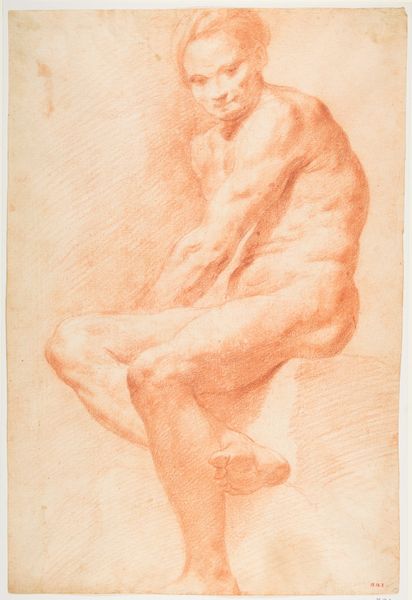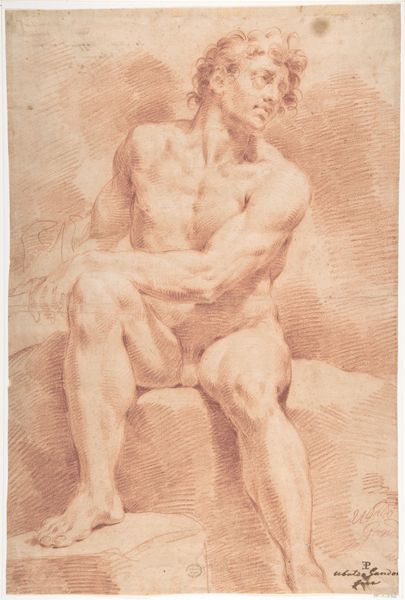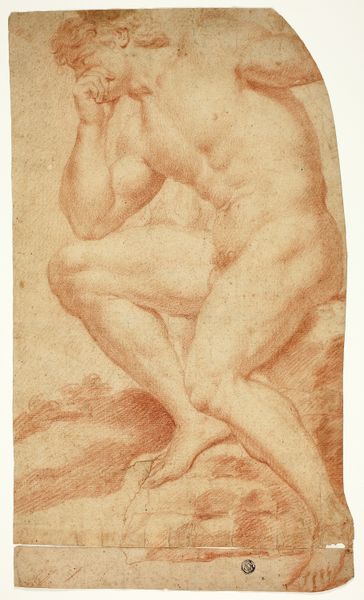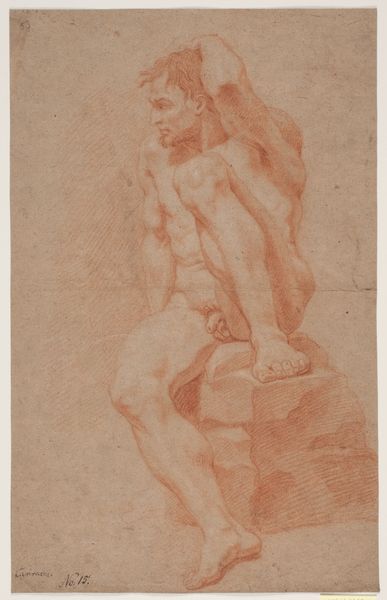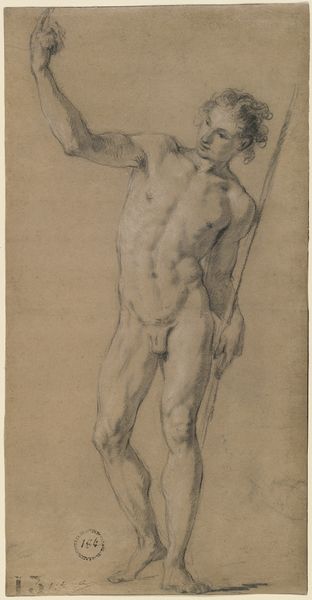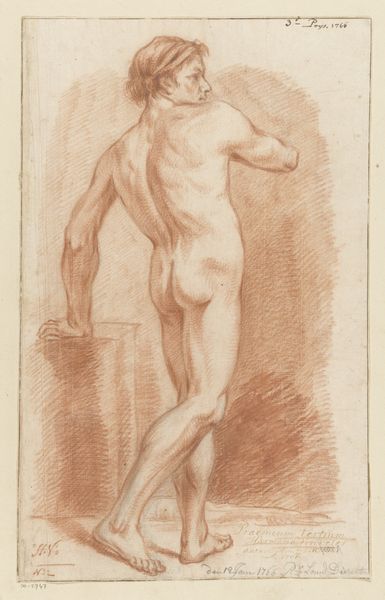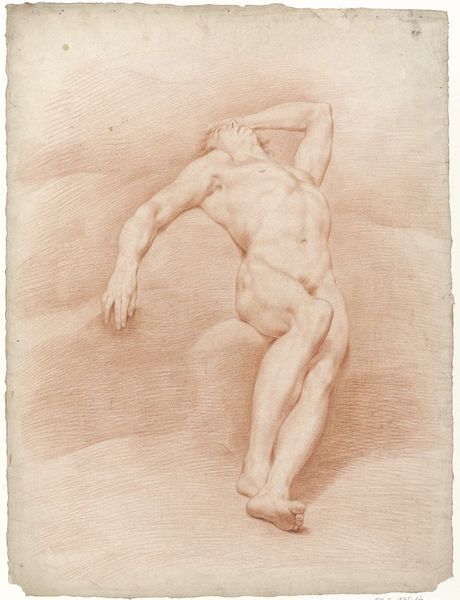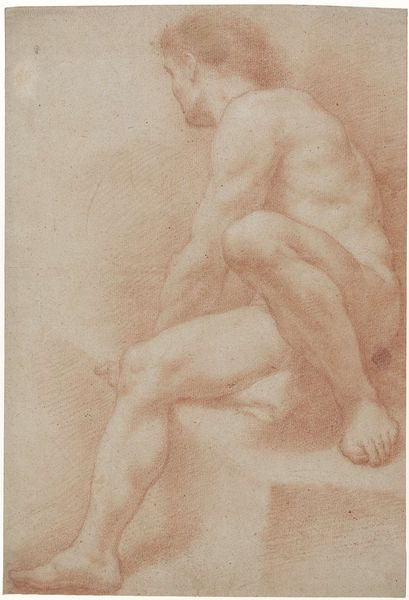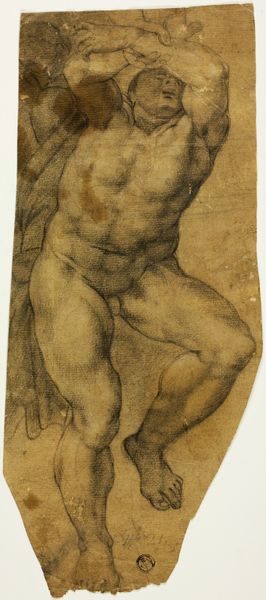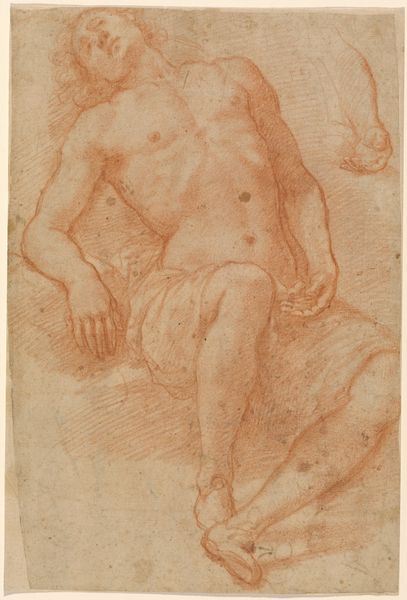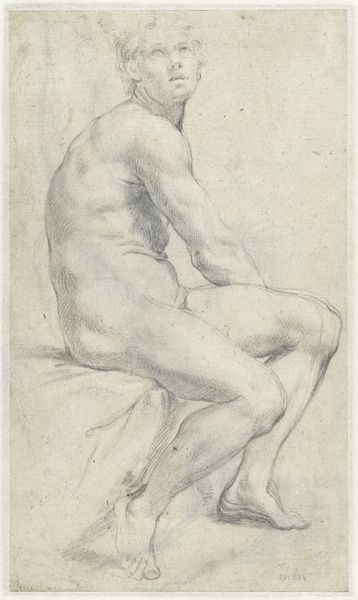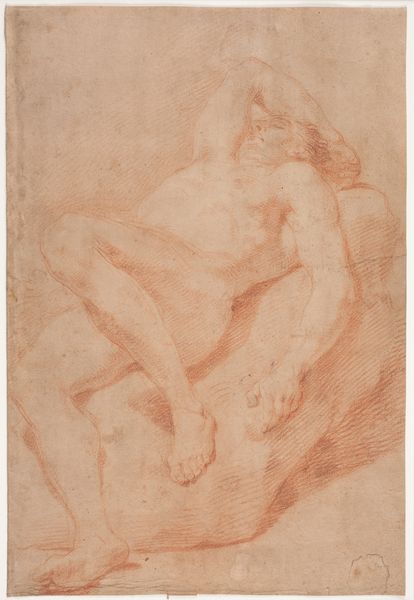
Dimensions: 17 5/16 x 11 7/8 in. (43.9 x 30.1 cm)
Copyright: Public Domain
Editor: Here we have Carle Vanloo’s "Life Drawing," created sometime between 1720 and 1765. It's a red chalk drawing, currently housed at the Metropolitan Museum of Art. The pose feels really introspective. What do you see in this piece from a formalist perspective? Curator: Intriguing choice of words. The introspective quality you perceive arises, in part, from the composition. Note the self-contained triangular arrangement of the figure, its bowed head, and the implied weight resting upon the crossed legs. The cross-hatching technique used to build the figure contributes significantly. Do you observe how the hatching concentrates and releases, defining musculature and volume? Editor: Yes, it's especially evident in the upper back and the thighs, creating a strong sense of depth. The red chalk is beautiful, but it looks like pencil and charcoal may also be at work in the shadows. Curator: Precisely. Vanloo's skill lies in modulating tone with varied media, transforming a static study into a dynamic exploration of form. Consider the implied narrative – is this a defeated hero, a contemplative philosopher, or merely a model in repose? This ambiguity, achieved purely through formal means, elevates the drawing beyond a mere anatomical study. What visual cues suggest which interpretation might be most viable? Editor: I hadn't considered the ambiguity before. The careful rendering of the musculature suggests classical heroism, but the hunched posture implies something else entirely… Perhaps the interplay of those two elements is key. It really makes you think about how the formal qualities can affect meaning so profoundly. Curator: Indeed. By analyzing the line, form, and composition, we unlock layers of meaning that transcend mere representation, engaging in the fundamental essence of aesthetic creation. It provides a fascinating glimpse into artistic intent without ever resorting to narrative or biographical context. Editor: That is really something, I guess I hadn't quite fully grasped it until now! Thanks for helping to unpack its components.
Comments
No comments
Be the first to comment and join the conversation on the ultimate creative platform.
